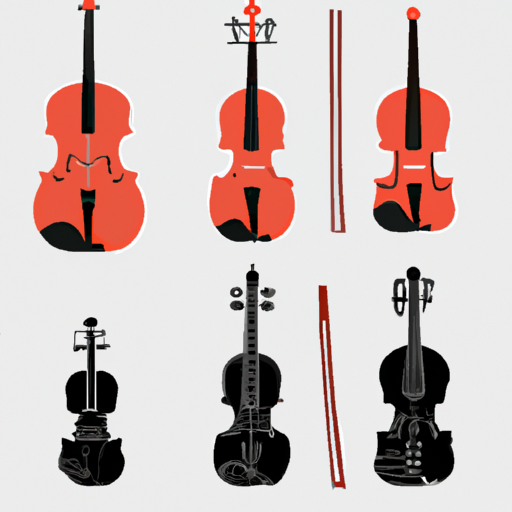
Learning to play the violin can be a rewarding and fulfilling journey. However, it is important to start off on the right foot by avoiding common mistakes that beginners often make. By being aware of these mistakes and taking the necessary steps to correct them, beginners can set themselves up for success and progress in their violin playing. In this article, we will explore some of the most common mistakes to avoid when starting to learn the violin as a beginner, and provide helpful tips and suggestions to overcome them.

One of the first mistakes beginners often make is selecting the wrong size violin. Choosing a violin that is too large or too small can lead to discomfort and hinder proper technique development. It is important to find the right size violin that suits your body frame and allows for comfortable playing.

To determine the right size violin for you, you can consult with a violin teacher or visit a reputable violin store. They will be able to measure your arm length and recommend the appropriate violin size. It is worth noting that as a beginner, you may need to start with a smaller size violin and gradually progress to a larger size as you grow and develop your technique.
Good posture and positioning are essential for playing the violin effectively and preventing injuries. Beginners often make the mistake of neglecting proper posture, resulting in discomfort or even physical strain. It is important to maintain a relaxed yet upright posture with your shoulders relaxed and your chin slightly tucked in.
Another common mistake is incorrect positioning of the violin on the shoulder and chin. The violin should rest securely on the shoulder, with the chin placed gently on the chin rest. This allows for better control and stability while playing.
To correct these mistakes, it is helpful to practice in front of a mirror or seek guidance from a violin teacher. They can provide feedback and help you make the necessary adjustments to your posture and positioning.
Warm-up exercises are crucial for preparing the body and fingers for playing the violin. Beginners often make the mistake of skipping warm-ups, leading to stiffness and tension while playing. Additionally, neglecting technique exercises can hinder progress and result in sloppy playing.
Before starting your practice session, it is important to spend a few minutes warming up your fingers and arms. This can include stretching exercises, finger exercises, and bowing exercises to loosen up the muscles and joints. Technique exercises such as scales and arpeggios should also be incorporated into your practice routine to develop finger dexterity and coordination.
The bow grip is a fundamental aspect of playing the violin. Beginners often make the mistake of using an incorrect bow grip, which can affect sound production and control. It is important to develop a proper bow grip from the beginning to ensure good technique and tone quality.
The correct bow grip involves placing the thumb on the bottom of the frog, with the index and middle fingers resting on top of the bow. The remaining fingers gently curve around the bow, allowing for flexibility and control. It is important to avoid gripping the bow too tightly or too loosely.
Developing a proper bow grip takes time and practice. It can be helpful to seek guidance from a violin teacher who can demonstrate the correct technique and provide feedback on your grip.
Consistency is key when it comes to learning the violin. Beginners often make the mistake of practicing sporadically or inconsistently, which can hinder progress and slow down skill development. It is important to establish a regular practice schedule that fits into your daily routine.
Setting aside dedicated practice time each day, even if it's just a few minutes, can help you develop discipline and make consistent progress. It is also important to practice with focus and intention, rather than simply going through the motions. Quality practice time is more effective than quantity.
Creating a practice schedule that works for you may involve planning ahead and prioritizing your practice time. It can be helpful to break down your practice sessions into smaller, manageable chunks and set specific goals for each practice session.
Scales and music theory may not be the most exciting aspects of learning the violin, but they play a crucial role in overall musical proficiency. Beginners often make the mistake of ignoring scales and music theory, focusing only on learning pieces. However, understanding scales and music theory can greatly enhance your playing ability.
Scales help develop finger strength, coordination, and intonation. They also provide a foundation for understanding key signatures and musical patterns. Incorporating scales and arpeggios into your practice routine can greatly benefit your overall technique and musicality.
Similarly, having a basic understanding of music theory can help you interpret and analyze the music you are playing. It can also aid in sight-reading and learning new pieces more efficiently. Taking the time to study music theory, even in small increments, can greatly enhance your musical journey as a violinist.
Tuning the violin is an essential step in maintaining accurate pitch and intonation. Beginners often make the mistake of neglecting to tune their violin regularly, resulting in out-of-tune playing. It is important to develop the habit of tuning your violin before each practice session.
To tune your violin, you can use an electronic tuner or a tuning app on your smartphone. Start by tuning the A string, and then tune the other strings relative to the A string. It is important to listen carefully and adjust the tuning pegs as needed to achieve the correct pitch.
Additionally, it is important to maintain proper tuning throughout your practice session. As you play, the strings may gradually go out of tune due to the tension and pressure. Periodically checking and adjusting the tuning will ensure accurate pitch and intonation.
Having a qualified violin teacher can greatly benefit beginners in their learning journey. They can provide guidance, correct mistakes, and offer personalized instruction tailored to your specific needs. However, beginners often make the mistake of trying to learn on their own without the guidance of a teacher.
A qualified violin teacher can help you develop proper technique, offer valuable feedback, and provide motivation and encouragement. They can also guide you in selecting appropriate repertoire and help you set realistic goals for your progress.
When looking for a violin teacher, it is important to find someone who is experienced, knowledgeable, and a good fit for your learning style. You can ask for recommendations from other musicians or search online directories for qualified violin teachers in your area.
It can be tempting for beginners to dive into challenging and complex pieces right from the start. However, overloading with difficult pieces too soon can be overwhelming and hinder progress. It is important to start with appropriate beginner-level pieces that allow for the development of a solid foundation.
Beginner-friendly repertoire usually consists of simple melodies and exercises that focus on basic techniques such as bowing, fingering, and rhythm. As you build your skills and confidence, you can gradually progress to more challenging pieces. It is important to find a balance between challenging yourself and building a strong technical foundation.
Working with a violin teacher can help you select appropriate repertoire and provide guidance on when to progress to more difficult pieces. They can assess your skills and abilities and recommend suitable pieces that will allow for growth and progress.
Learning the violin as a beginner can be both exciting and challenging. By avoiding common mistakes and taking the necessary steps to correct them, beginners can set themselves up for success and progress in their violin journey. Remember to choose the right size violin, maintain proper posture and positioning, incorporate warm-up and technique exercises, develop a proper bow grip, establish a consistent practice schedule, embrace scales and music theory, tune the violin regularly, seek guidance from a qualified violin teacher, and start with appropriate beginner-level repertoire. With dedication, perseverance, and the willingness to learn from mistakes, beginners can overcome obstacles and achieve their goals in learning the violin.